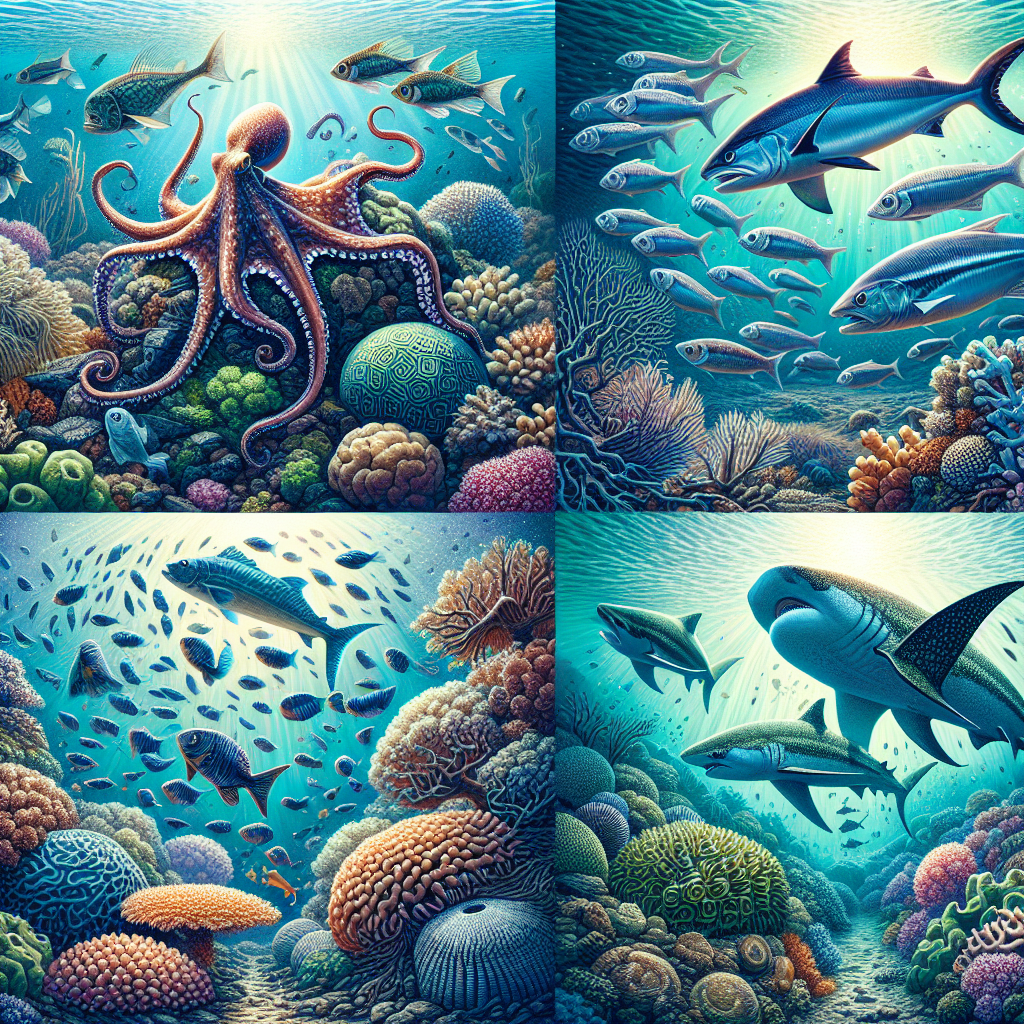The Art of Aquatic Dining
For the myriad of life beneath the waves, feeding is an elaborate dance and a critical survival skill. Each aquatic creature, from the smallest shrimp to the mightiest shark, has evolved uniquely adapted feeding and foraging mechanisms that intrigue and fascinate. Let's dive into the underwater world of aquarium inhabitants to explore these behaviors.
Understanding Foraging Types
Underwater, every dietary niche is filled. There are hunters and scavengers, filter feeders and grazers, each with methods refined over eons. Grazers, like many species of fish, scrape algae or small organisms from surfaces. Predators may use speed, camouflage, or teamwork to capture prey. Scavengers consume the left-overs, playing a pivotal role in the ecosystem. For more in-depth information on scavengers, visit our page on biotope aquariums and their inhabitants.

Filter Feeding Finesse
One of the most fascinating foraging behaviors belongs to filter feeders. These creatures, including sponges and certain species of whale, sieve tiny food particles from the water. They play an invaluable role in the health of aquatic ecosystems by purifying water as they eat. For those who keep filter feeders in their aquariums, ensuring the right flow and nutrient levels is key to their care. Discover more about different aquarium plants that can complement filter feeders by adding to the water quality and aesthetic of your tank.
Curious Carnivorous Tactics
Carnivorous fish such as oscars, arowanas, and piranhas have developed dynamic hunting strategies. They might use ambush tactics or high-speed rushes to overtake their prey. A well-planned aquarium layout can provide these fish with the environment they need to exhibit natural predatory behavior. Learn about the intricacies of predatory and defensive behaviors in our dedicated section.
Steps in Supplementing Diets
To maintain a healthy aquarium, one must often supplement the natural feeding behaviors with a balanced diet from outside sources. Flake foods, pellets, and freeze-dried options provide necessary nutrients not always available in a closed system.
For an array of high-quality fish foods catering to different dietary needs, the products listed here are an excellent start:
Scavenging: A Clean-Up Crew
Scavenger species like catfish and snails are the custodians of the aquarium. These bottom-dwellers consume plant material, dead animals, and detritus, keeping tanks clean and reducing waste levels. Not only are they essential for a balanced ecosystem, but watching them methodically scour the tank can be surprisingly meditative.

Constructing Foraging Grounds
When setting up an aquarium, think of it as crafting a stage for foraging behaviors. Hiding places, like caves and plants, are crucial for predatory fish to stalk their prey. Varied substrates and the introduction of live foods can simulate a more natural environment, encouraging healthy foraging activities among your aquatic pets.
Nurturing Diverse Diets
Understanding the specific needs of your aquarium inhabitants is essential. Some may require live prey, while others thrive on plant-based diets. Offering a diet too far removed from their natural food can lead to health issues or a decrease in natural foraging behavior. Researching and providing the right kind of food enriches your aquarium life and ensures longevity.
Observing Aquatic Acumen
One of the pleasures of maintaining an aquarium is observing the natural behaviors of your aquatic charges. Feeding time offers a window into their personalities and habits. It's a chance to ensure they're healthy and happy while marveling at the diversity of nature's adaptations for survival.
For those curious about the intricate feeding behaviors of marine life in a larger than life setting, here's a video showcasing the drama of underwater dining:
Feeding for Future Generations
By understanding and respecting the feeding and foraging behaviors of your aquarium inhabitants, you not only cater to their well-being, but you also become a steward of a miniature ecosystem. Your careful attention to diet, tank conditions, and feeding routines ensure that these fascinating underwater behaviors continue to thrive for generations of aquarists to behold.